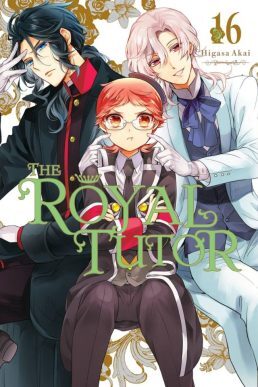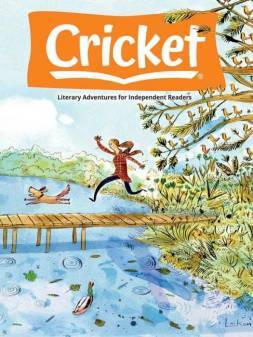S.Q. Eries's Blog, page 13
June 28, 2022
Manga Review: I Want to Be a Wall Vol. #1
 Manga with fujoshi as the protagonist aren’t exactly mainstream, but they do exist. I’ve encountered them in My Girlfriend’s a Geek and Wotakoi, and now in Yen Press’ I Want To Be A Wall. Read on for my review of Volume 1.
Manga with fujoshi as the protagonist aren’t exactly mainstream, but they do exist. I’ve encountered them in My Girlfriend’s a Geek and Wotakoi, and now in Yen Press’ I Want To Be A Wall. Read on for my review of Volume 1.
Yuriko, an asexual woman, agrees to take a husband to satisfy her parents-which is how she finds herself tying the knot with Gakurouta, a gay man in love with his childhood friend with his own family circumstances. And so begins the tale of their marriage of convenience.
The ReviewNewlyweds Gakurouta and Yuriko Hanazono’s relationship is absolutely not based on mutual attraction. Gaku is a gay man who harbors an unrequited secret love for his straight childhood friend, and the only romance that gets Yuriko’s heart racing is the Boys Love (BL) 2-D type. However, they’re under pressure to find a spouse, so these two agree to tie the knot to get society off their backs. But even though they’re just playing the part of traditional husband-and-wife, a caring bond blossoms between them.
I’m not exactly sure what the I Want to Be a Wall title refers to, but this is a very niche manga. The book is rated older teen for language (and probably the references to Yuriko’s more explicit BL books), but I don’t see the story holding much appeal for younger audiences. The two main characters are office workers in their early 30s, and their dilemmas include a parent who wants them to hurry up and give her grandchildren.
My guess is that the target audience is adult BL fans (fujoshi). The only romance swarming from these pages is Yuriko’s BL collection and Gaku’s steadfast yearning for his very straight and oblivious longtime friend Sousuke. Unsurprisingly, Yuriko is very understanding of Gaku’s feelings for Sousuke, perhaps overly so. Whenever the two men interact, Yuriko gets as worked up as if she’s watching one of her favorite BL ships come to life.
The primary tone of the manga is humorous. We start with the mismatched pair awkwardly stepping into marriage and then the comedy that arises as they figure out how to cohabitate and project the façade of wedded bliss. Despite his love for Sousuke, Gaku is determined to be a model husband to Yuriko in every other way. This results in some standard miscommunication mishaps, but it also leads to more interest in Yuriko’s BL hobby than she’d like. It’s not that Yuriko is a closet fujoshi. Rather, Gaku keeps stumbling upon the more graphic and embarrassing works in her collection.
But while there are laughs as the two try to figure out what “normal” behavior is for a married straight couple, the story does include poignant moments. After all, Gaku and Yuriko are co-conspirators in a pretend marriage because they’re social misfits. Gaku’s situation tugs more on the heartstrings because the person he loves is so close yet forever out of reach. Yuriko’s situation doesn’t involve heartache; rather, it’s about feeling out of place because of her fujoshi hobby and disinterest in dating. Still, her introspective evokes the angst of someone worried something’s wrong with them because they’re unable to fit in with the rest of the crowd.
As you might guess, there’s not a whole lot of action with two middle-aged office workers in the lead role. The BL aspect aside, the scenes are very slice-of-life. The most exciting thing that happens is burned fish in the broiler. The primary element moving the plot along is the feelings of the characters, and though the artwork isn’t particularly flashy or unique, it effectively conveys the varied emotions of the cast.
Extras include a bonus mini-chapter and translation notes.
In SummaryI Want to Be a Wall is not a romantic love story, but it does explore love quite a bit. Mainly in how the two protagonists’ views on romance vary from the very traditional marriage they’re projecting to the world. While the middle age characters are interesting and sympathetic, I’ve no idea where this slow-paced, introspective-heavy story is going. However, I’m willing to continue reading to find out.
First published at the Fandom Post.
June 21, 2022
Manga Review: The Royal Tutor Vol. 16
 Rich, handsome young men, each with his own distinct personality…this type of bishounen cast is a staple in shojo manga. And if you like yours with a generous helping of chibi humor, you should definitely check out Higasa Akai’s The Royal Tutor. Read on for my review of Volume 16. (For my reviews of other volumes click here.)
Rich, handsome young men, each with his own distinct personality…this type of bishounen cast is a staple in shojo manga. And if you like yours with a generous helping of chibi humor, you should definitely check out Higasa Akai’s The Royal Tutor. Read on for my review of Volume 16. (For my reviews of other volumes click here.)
For the duration of Eins’s mysterious isolation, the young princes have been barred from seeing their older brother. But as Count Rosenberg grows more desperate to help his friend, he finally decides to allow a meeting—only to discover that Eins has vanished?!
The ReviewAfter volumes and volumes of playing the bad guy and interfering with the younger princes, Count Rosenberg finally views them as Eins’ concerned kin, not enemies for the throne. However, no sooner have the princelings and their tutor gained Rosenberg’s trust than they discover Eins has fled town – taking a firearm with him.
A suicidal Eins is unimaginable for the princelings, understandably so. However, Rosenberg’s uncharacteristic panic at his disappearance sends the foursome and their tutor rushing to the countryside in search of the eldest prince. Akai-sensei does an excellent job keeping the tension high for the dramatic rescue – then everything kind of deflates when we discover the truth behind the dark prince’s brooding behavior.
On one hand, it’s understandable. On the other hand, it’s kind of ridiculous. Especially after delving into the 14-page flashback about the woman who left Eins not only heartbroken but socially incapacitated. At any rate, the meaning behind the king’s cryptic assertion that Eins is unfit to be king is made clear as are the reasons behind Eins’ past actions. His brothers, of course, refuse to leave him in such despair, and in true Royal Tutor fashion, each offers his own personal bit of encouragement or problem-solving to uplift Eins and restore him into their brotherly circle.
Thus, the arc ends on a happy note. Where once there were four princes making a lively racket in the palace, now there are five. And a sort of nicer Count Rosenberg is hanging around, too.
With so many long-standing conflicts getting resolved, the series is clearly coming to a close. Volume 16’s last chapter launches what looks to be the final arc. After pondering how his younger sons have blossomed under Heine and learning the truth behind Eins’ canceled marriage engagements, the king decides it’s time to decide the successor.
Extras include bonus manga and illustrations and the first page printed in color.
In SummaryCount Rosenberg has a change of heart about Heine and his princely pupils–just in time to call on their help when Eins disappears. Drama runs high, complete with a race against time, the breaking down of doors, and a scuffle over a deadly weapon. However, once the danger is over and the truth about Eins comes out, it’s a bit of a letdown. At any rate, harmony is restored to the family, and you’ll never look at the eldest prince the same again. That leaves just the teeny issue of succession, and now that Eins’ fatal flaw has been revealed, I’m curious to see how the king will decide.
First published at The Fandom Post.
June 7, 2022
Manga Review: A Bride’s Story Vol. 13
 Kaoru Mori is best known for Emma, an exquisite romance/slice-of-life set in Victorian England. Her latest work to be released in the United States, A Bride’s Story, is also a historical/slice-of-life but is vastly different than Emma. Set in Central Asia in a rural town near the Caspian Sea during the early 19th century, A Bride’s Story revolves around a young woman, Amir, who arrives from a distant village across the mountains to marry Karluk, a boy 8 years her junior. Volume 13 has been released, and you can read on for the review. (For reviews of other volumes, click here.)
Kaoru Mori is best known for Emma, an exquisite romance/slice-of-life set in Victorian England. Her latest work to be released in the United States, A Bride’s Story, is also a historical/slice-of-life but is vastly different than Emma. Set in Central Asia in a rural town near the Caspian Sea during the early 19th century, A Bride’s Story revolves around a young woman, Amir, who arrives from a distant village across the mountains to marry Karluk, a boy 8 years her junior. Volume 13 has been released, and you can read on for the review. (For reviews of other volumes, click here.)
Mr. Smith keeps on his journey retracing his steps, stopping next at a seaside village where he is greeted by a pair of enthusiastic young brides! Laila and Leily are eager to prove themselves as capable hostesses, but failing in the attempt could have serious social consequences. As the twins scramble in the kitchen, the discussion around the table turns to recent rumors of danger in the region. Mr. Smith now faces a difficult decision—turn back, or risk pressing on to his final stop?
The ReviewEmotionally and plotwise, Volume 13 runs the gamut. It starts off with a carving “lesson” between Rostem and a local woodworker that is the very definition of slice-of-life.
The narrative then shifts to Mr. Smith’s reverse journey as he reaches the shared home of the now wedded twins and their husbands. They might be married, but Laila and Leily are as impetuous as ever as they take on the responsibility of hosting the travelers. The endeavor predictably turns into a sitcom with the two scatterbrained sisters barely managing to execute the myriad duties expected of a host.
However, once the kitchen chaos has died down, Mori-sensei surprises us with Talas’ first ocean visit. Having learned that the desert woman has never swum, the twins insist on taking her to the sea. What comes next is a series of gorgeous illustrations that beautifully reflects Talas’ awe at the underwater world.
Then Mr. Smith and company move on, but not before the villagers warn them about unrest in the direction they’re headed. Russian activities have been mentioned throughout the series, and now they take center stage as Mr. Smith’s group is first ambushed by bandits then gets caught when Russians attack on a town they’re traveling through. Fans of historical combat will geek out at the weapons and techniques meticulously illustrated on these pages. In Chapter 92 “Bandits,” Ali demonstrates what it takes to load gunpowder and a lead ball into a rifle while racing to avoid sniper fire. Nikolovsky shows even greater skill in Chapter 93 “Turning Point” when he takes out several Russian soldiers to secure an escape route for fleeing townsfolk. Even Talas shows her mettle, riding Chubar to capture a spooked horse. Mr. Smith, as usual, isn’t very helpful when danger strikes but survives thanks to his companions.
And because those companions deem it unsafe to continue their journey, he agrees to end the endeavor, detouring to a port to sail home to England. That took me by surprise as I expected the series to conclude with a reunion between Smith and Amir’s family. Instead, Smith and Talas (and Chubar!) sail off, presumably to their happily ever after, and it is Nikolovsky’s return to Hastings that concludes the arc. And although Nikolovsky’s personal life isn’t really part of the story, the last chapter does offer insight into the man’s personality.
Extras include Mori-sensei’s manga style afterword.
In SummaryAfter a brief glimpse of the woodworker’s shop in Amir’s town, the narrative continues with Smith’s endeavor to revisit and photograph the people he’s encountered. His reunion with the twins is comic, with the girls biting off more than they can chew by playing host. However, the light mood evaporates when Smith and company enter an area where the Russians are stirring up trouble. Thus Smith is forced to change plans, and although the trip ends much differently than I anticipated, it still ends happily for him and his three traveling companions.
First published at the Fandom Post.
May 31, 2022
Manga Review: The Magical Revolution of the Reincarnated Princess and the Genius Young Lady Vol. #1
 Isekai has really overtaken the anime/manga scene the last several years. The Magical Revolution of the Reincarnated Princess and the Genius Young Lady is one such title. Read on for my review of Volume 1.
Isekai has really overtaken the anime/manga scene the last several years. The Magical Revolution of the Reincarnated Princess and the Genius Young Lady is one such title. Read on for my review of Volume 1.
“If I could use magic, I would fly in the sky. …” Unable to use magic, Princess Annisphia of the Kingdom of Palettia uses memories of her past life to create the new field of “magicology,” and make her dreams come true. While test-flying her new witch’s broom, she happens across Euphilia, a magical genius having her engagement unjustly and publicly broken off. Seeing the tears in Euphilia’s eyes, Annisphia hatches a plan to kidnap the girl and take her home!
The ReviewAs you might guess from the lengthy title, this is an isekai involving a modern-day person reborn as a princess in a fantasy world where magic exists. No personal details are given of Princess Anisphia’s past life; we don’t know if she was previously male or female, if she died young or lived a full life. Rather, the memories that flood back to her at age 5 are general knowledge of our modern world, concepts, and culture. And they come in handy when Anisphia, who was born without magic, uses a scientific mindset to develop techniques that allow her to harness the power of magic.
As you might guess, Anisphia is not a prim and proper princess. She’s more of a techie obsessed with exploiting magic in practical ways that often mirror our world’s modern conveniences. She’s not interested in politics or society. She says what she thinks, and left to her own devices, she’d spend all her time in her workshop.
She’s also a bit of a pervert, and the object of her attention is Euphyllia, her brother’s fiancée. Or more accurately, his rejected fiancée. In a scene reminiscent of an otome game, Prince Algard and his three friends publicly accuse Euphyllia of bullying the commoner student who has caught the prince’s eye. The allegations are of course false, but Euphyllia has no recourse and is about to lose all standing when Anisphia literally crashes the party on her prototype flying broomstick. Upon discovering what’s going on, Anisphia “rescues” the girl from humiliation by making Euphyllia her own.
By “her own,” she means making Euphyllia her assistant. Unlike Anisphia, Euphyllia is an unparalleled magic wielder. Moreover, she is skilled in etiquette and the martial arts. From a research standpoint, it’s obvious why Anisphia is interested in recruiting her.
However, she is also interested in Euphyllia because “she’s gorgeous and adorable” and “totally [her] type.” It’s clear from everyone’s reactions that yuri relationships are not a thing in the kingdom of Palettia, and I would guess from Anisphia’s corny pickup lines and handsy behavior that she was once a guy who was less than charming in her previous life. The first night at Anisphia’s villa, Anisphia takes the liberty of forcibly removing Euphyllia’s clothes. (No, there’s no nudity (yet), but yes, there is very provocative fan service.) However, balancing Anisphia’s aggressive advances is a level of sensitivity in understanding Euphyllia’s feelings the way no one else does.
As far as the contents of Volume 1 go, Chapters 1 and 2 focus on the public display that is Euphyllia’s canceled engagement and Anisphia’s solution to “rescue” her. Chapter 3 introduces Euphyllia to her new home at Anisphia’s villa with its magical tools and workshop. Chapter 4 is a full-on lecture about magic and magicology, and Chapter 5 shows the outcome of the pair’s first collaboration.
The plot seems like it’ll be a combination of the advancement of magicology and a romance between the impulsive weirdo of the royal family and the talented-in-every-way-proper-lady. Anisphia’s not a serious person, so the manga’s overall tone isn’t serious, and most of the comedy results from the clash between Anisphia’s outlook and mannerisms with everyone else’s. The chapter on the rules of magic was a bit of a slog, but now that the explanations are out of the way, hopefully, the plot can flow a bit more freely.
Extras includes bonus art on the inside of the cover and the first page printed in color.
In SummaryIsekai where characters bring elements of modern technology into a fantasy world are commonplace. The Magical Revolution of the Reincarnated Princess and the Genius Young Lady tries to separate itself from the pack by including a twist on a reverse harem trope. Namely, a princess taking in her brother’s disgraced former fiancée. The story is off to a decent start due to the brash proposal of our reckless protagonist, but it remains to be seen whether the combined personalities of the reincarnated princess and the genius young lady can keep the momentum going.
First published at the Fandom Post.
May 24, 2022
My First (Virtual) Author Visit!
As a student in the San Francisco Unified School District, I’d never heard of author visits. Due to the advent of California’s Prop 13, mine was the generation that had to do with 20-year-old textbooks and do without Band-Aids. And field trips? That was the stuff of TV and movies, not our reality.
It was only after I joined The Society of Children’s Book Writers and Illustrators that I learned that schools invited authors to speak at student assemblies or teach workshops. It sounded like the sort of opportunity reserved for traditionally published authors, especially since these arrangements often involve book selling/book signing. So I didn’t think I’d the chance to do something like that until I had an actual book in print.
I was wrong.
Last month, I got an email from my ballroom dance partner back when I was in grad school. Like me, Mark’s an engineering grad who no longer does engineering. Instead, he teaches fourth grade in Minnesota. We hadn’t been in touch for years, but thanks to the power of the Internet, he knew I’d gotten some short stories published and asked if I’d do a virtual author visit at his school.
I said yes.
Now, this was not a Yippee!-Can’t-wait-to-do-this yes. It was more of a Sounds-terrifying-but-this-will-be-good-for-me-as-a-writer yes.
Fortunately, Mark had hosted authors before, in-person and virtually, and gave me guidelines to work with. Based on his suggestions, I put together a 20 minute presentation that included photos of the horses who inspired “Rescue Buddy” and a video of the belt and pulley system at the Charles River Museum. We also arranged to have students read “Impromptu Performance” and “Rescue Buddy” to familiarize them with my writing.
So the visit was last week, and it actually went well!
I was concerned that Google Meets would fail us, but it did its job (though gauging audience reaction was difficult, especially when I was sharing my screen). I got through the presentation portion more or less as rehearsed, and the Q&A portion was surprisingly fun.
And unexpectedly, the Q&A involved anime!
The students asked about my pen name, and I told them I originally wrote fanfiction. After defining fanfiction for those unfamiliar with the term, I explained that I wrote stories about the anime I liked, and my pen name was a combination of favorite character names.
Well, there’s at least one anime fan in the school because the next questions I got were:
Do you like dubs or subtitles better? Do you know the Seven Sins anime? What do you like best about Naruto?Hahaha…Never thought I’d make a weeb connection during an author visit. But if it helps young readers relate, why not?
So thank you, Mark, for the opportunity! I gained valuable XP, and maybe one of these days I’ll level up with an in-person author visit!
May 17, 2022
Graphic Novel Review: The Stretcher Bearers
 I never had much interest in war narratives until I came across Tanya the Evil. It’s a completely fictional isekai, but its war nerd creator did such a wonderful job dramatizing the varied aspects of military conflict that it completely hooked me. Since then, I’ve checked off titles such as Tom Hanks’ Greyhound and the Ken Burns documentary The War from my viewing list. On the graphic novel front, I recently reviewed The Stretcher Bearers. Read on for the review!
I never had much interest in war narratives until I came across Tanya the Evil. It’s a completely fictional isekai, but its war nerd creator did such a wonderful job dramatizing the varied aspects of military conflict that it completely hooked me. Since then, I’ve checked off titles such as Tom Hanks’ Greyhound and the Ken Burns documentary The War from my viewing list. On the graphic novel front, I recently reviewed The Stretcher Bearers. Read on for the review!
Maxwell Fox didn’t know what he would witness in France. America had only been in the Great War since April 2, 1917. Nothing could have prepared him for the horrors that awaited him and the rest of the men of the 4th Infantry “Ivy” Division. As the Meuse-Argonne Offensive raged on, Maxwell became assigned to a unit of stretcher bearers, men who were tasked with running into harm’s way to rescue their fallen brethren from the clutches of death. This wouldn’t be an easy job, but with Graham, Frank, and Ralph by his side, Maxwell had to rely on his team and hope to survive. A dark and honest look at the bond of brotherhood during war, The Stretcher Bearers tells the unforgettable tale of a young soldier trying to save the lives of wounded soldiers and keep the men he’d formed a bond with alive. But in the “war to end all wars,” no one was safe.
The ReviewIn September 1918, the Battle of Meuse-Argonne begins. Among the American forces is 16-year-old stretcher-bearer Maxwell Fox. He and his three compatriots are tasked with bringing aid to the wounded. But although their job is to save lives, they have no guarantee of safety in the chaos of the battlefield.
The Stretcher Bearers is written as a soldier’s memoir. While the story takes place within the final offensive that secured victory for the allies, we get little of the broader tactics and strategy involved in the Battle of Meuse-Argonne. Rather, the story zooms in on the personal experiences of a green soldier on the ground who has no knowledge of the tide of war beyond his orders and the situation immediately before him.
Our main character is Maxwell Fox, a teenage orphan who lies about his age in order to enlist. He’s assigned to a stretcher-bearer unit along with fellow North Carolinians Ralph, Frank, and their unit leader Graham. The four provide us with a spectrum of personalities on the front line. Maxwell’s the fresh recruit receiving his baptism into combat. Ralph’s the soldier whose mind shatters beneath the constant stress while Frank’s the one who turns hard and cynical. And holding the unit together is Graham, a model leader who uses all of his experience to look out for the men under his command.
The four might not be actively engaging the enemy, but they’re definitely exposed to all the enemy’s attacks as they respond to the call of “Stretcher!!” Thus readers follow the characters through the rain of gunfire, heavy shelling, an air attack, and a gas attack. They also take us to the aid station, which operates under less than ideal circumstances. They suffer the misery of being exposed to the elements, the gruesome remains of casualties, and the rats and wolves attracted by the dead.
The Stretcher Bearers is printed as black-lined artwork with gray, which acts as shading, and the drawings have an Archie comics look to it. That means the artwork isn’t nearly as unsettling as full-color illustrations drawn in a more realistic style. Even so, the content is still disturbing, especially when you pause to study the details. And the creators aren’t hesitant to put an image of a soldier getting his brain shot out in the foreground.
In regard to character design, everyone wears similar clothes and gear and has similar builds. For the most part, they wear helmets, so readers only have slight differences in facial details to differentiate the characters. As a result, I had trouble figuring out who the main cast was at the beginning, and I was constantly getting Ralph and Frank mixed up.
In terms of storytelling, the opening is a little confusing. The creators drop us into Maxwell’s first battle with little introduction, and I had to reread the first few pages a couple of times to get oriented. The ending is a bit on the sappy side, but I appreciated the uplifting tone. Everything in between, however, is solid. Maxwell’s narrative is engaging, and the pacing flows well.
There is no age rating, but I would recommend this as a 12 and up the book. If you’re thinking of giving this to someone younger, you might want to make sure that child is mature enough for the content.
In SummaryThe Stretcher Bearers is a fictional account of one teenager’s World War I tour of duty. Maxwell Fox is only on the front for a total of two weeks, but he experiences the full breadth of the Western Front’s horrors as he struggles to keep himself and others alive. At the same time, he forges bonds unlike any other with the men of his unit. The narrative glosses over the broader details and significance of the Battle of Meuse-Argonne, but if you want an intimate portrayal of survival in the trenches, this graphic novel delivers.
First published in The Fandom Post.
May 3, 2022
Souvenirs from Asia: Haikyu!! Nendoroid Figure
Business travel isn’t what it used to be. Because of COVID, my husband is among the many who are no longer jetting all over the globe for work. As such, my stream of Asian souvenirs has dried up. (But the plus side as I get more time with my husband!)
However, for my birthday, my husband surprised me with this:

A Shoyo Hinata Nendoroid figure! Isn’t he cute? This particular version is dressed in the orange Karasuno uniform, and his accessories include a volleyball and a raw egg over rice.

My husband found him while browsing at a local swap meet. Most vendors there had only video games, but one also had figurines she picked up during her last trip to Japan. (So it kind of fits the category of Asian souvenir…) My husband spotted Hinata among her wares, and tada! his birthday gift shopping was done. (Good job!)
We’ve never had a Nendoroid so we’re still getting used to the mechanics of posing and swapping out the different pieces. However, it’s fun and gives us something Haikyu!! related to do while we wait for Season 5 of the anime to come out.




April 12, 2022
Just Published: Rescue Buddy!
 When I was a kid, I loved horses. I was also a reader, so I read every horse book I could get my hands on. So it is with great pleasure I announce the release of “Rescue Buddy” in the April 2022 issue of Cricket Magazine.
When I was a kid, I loved horses. I was also a reader, so I read every horse book I could get my hands on. So it is with great pleasure I announce the release of “Rescue Buddy” in the April 2022 issue of Cricket Magazine.
Click here for a link to the magazine!
While “Rescue Buddy” is my first published horse story, it is not the first horse story I’ve written. My novel-length manuscript, Cynisca and the Olive Crown, centered around the Spartan princess who twice won the ancient Olympics chariot race. Although that manuscript got trunked, I enjoyed writing and researching it. Among those who helped me fact-check were horse owners Shannon Heidt and Julie Opipari, who for some reason were willing to answer my million and one questions about their equine friends.
When I got the idea for “Rescue Buddy,” I once more reached out to them. Although six years had passed since our last correspondence, both promptly responded to help me get my horse details correct. They checked my dog and cat facts, too! (Yup, they’ve got a lot of critters.)

I am deeply grateful for their generosity with their time and knowledge, and I am thrilled to finally have something to give them for my efforts. Fun fact: the Friesian gelding in “Rescue Buddy” is named after Shannon’s horse Titan.
So even though I don’t have any furry friends of my own (my husband is allergic), “Rescue Buddy” was thoroughly vetted out by two ladies who do, and I hope you check it out!
March 22, 2022
Graphic Novel Review: The Lions of Leningrad
 I never had much interest in war narratives until I came across Tanya the Evil. It’s a completely fictional isekai, but its war nerd creator did such a wonderful job dramatizing the varied aspects of military conflict that it completely hooked me. Since then, I’ve checked off titles such as Tom Hanks’ Greyhound and the Ken Burns documentary The War from my viewing list. On the graphic novel front, I recently reviewed The Lions of Leningrad. Read on for the review!
I never had much interest in war narratives until I came across Tanya the Evil. It’s a completely fictional isekai, but its war nerd creator did such a wonderful job dramatizing the varied aspects of military conflict that it completely hooked me. Since then, I’ve checked off titles such as Tom Hanks’ Greyhound and the Ken Burns documentary The War from my viewing list. On the graphic novel front, I recently reviewed The Lions of Leningrad. Read on for the review!
On January 27, 1962, a concert at the Maly Theatre in Leningrad is interrupted by a gunshot and an ex-state prisoner is arrested. At the police station, the mysterious gunman recalls the early summer of 1941… When the German army begins its invasion of Soviet Russia, four children are evacuated to the countryside: Maxim, the son of a senior Communist Party official; Pyotr, the son of writers; Anka, the daughter of a concert violinist; and Grigory, the son of a pilot that was executed for insubordination. The farm where they are staying is attacked and the train that is supposed to take them to safety is blown to bits by German planes. The four children must fight through enemy lines to get back to their families in Leningrad. But all that awaits them is the beginning of one of the most prolonged and destructive sieges in history. Two and half desperate years that will push their friendship – and their lives–to the limit.
The ReviewIn 1941, the Nazis begin their invasion of Soviet Russia. The children of Leningrad evacuate the city, but when German forces attack the countryside, four 15-year-old friends end up behind enemy lines. They fight their way back to their families in Leningrad – only to become trapped in one of the worst sieges in history.
The format of this book is a little different than the other Dead Reckoning World War II graphic novels that I’ve read. Instead of a collection of three parts, The Lions of Leningrad is a two-part story told in retrospective, and instead of one main character, there are four.
In terms of the old Soviet regime, these kids are among the learned and privileged. Maxim’s the son of a communist party official. Pyotr’s the son of a writer. Anka is the daughter of the Leningrad Philharmonic’s concertmaster. Grigory is the son of a fighter pilot. Unfortunately, Stalin’s policies are starting to cast a cloud over their lives. At the onset of the story, Grigory’s father was recently executed for daring to speak about the deplorable condition of their fighter planes, and Pyotr’s father has stopped writing for fear of offending the government.
Unfortunately for them all, things are about to get much worse. In Part 1, we get a very brief glimpse of the kids of Leningrad playing in a potato field right before they’re evacuated to the countryside. But the country proves no safer than the city, and our four main characters must dodge Nazi air and ground forces to flee back to Leningrad. Days later, the Germans surround the city, trapping everyone within. Anka joins the firefighting force to obtain better rations for her and her aged father. Grigory’s widowed mother starts sleeping with Maxim’s communist official father for better rations for her and her son. And Pyotr’s forced to go on the run after his parents are arrested by the NKVD for allegations of spying.
The misery intensifies in Part 2 with the onset of winter. With their food stores destroyed by German bombs, some residents resort to cannibalism. Others starve or freeze to death. With conditions growing desperate, Maxim’s father secures passes for his son and three friends to leave Leningrad via a truck route over frozen Lake Ladoga. But once again, they’re attacked by Germans, and only two of the friends make it safely to Moscow.
The creators do a good job incorporating various aspects of the war and siege. Throughout, it’s clear that the Soviet government is as much a threat to their own people as the Nazis. Leningrad citizens much watch what they say for fear of arrest by the NKVD. Soldiers on the front are forced to fight with antiquated equipment, peasants are forced to dig trenches for the Soviet army, and any officers who order a retreat are shot on the spot. Even in the worst of the siege, with countless people dying from starvation, the NKVD increases misery with their hunt for enemies of the state.
However, the book is short on footnotes. If you don’t know what a gulag or a dourak is, you’ll have to look it up elsewhere. Several scenes of the besieged city feature giant balloons, but their purpose is never explained. No footnotes are provided regarding political or military terminology, but interestingly, it does provide one to clarify the cultural figure Father Frost (the Soviet equivalent of Santa Claus.
Wars are not pretty, and the creators do not shy from throwing casualties on the page. There are corpses and violent deaths throughout, although drawings do not get overly graphic with those details. We see the remains of a butchered pet but are spared watching cannibals devour their victims. By the way, I found it odd that Grigory’s dog lasted longer than Pyotr’s grandmother. I would’ve thought that any pet out in public would’ve been pilfered before the cannibalism started.
The narrative includes plenty of action and dire straits to keep excitement levels high. Character arcs, on the other hand, leave something to be desired. Of the four teenagers, only Anka really stands out. The boys mostly react to situations; Anka actually tries to take initiative. She has more spunk, resilience, and compassion than the three boys combined. She also stands out because she’s the only teenage girl and the only blonde in the cast. The vast majority of characters are male, and aside from their headgear, the boys don’t have much to distinguish them in a crowd.
But even though Anka stands out, she’s not all that relatable as a female character. Much like Anna from Dead Reckoning’s Night Witches, she is part superheroine and part sex object for the guys to leer over. The boys obviously want to be around her because they’re in love/lust with her, but it’s not clear what she gets out of their company (aside from Maxim’s rations). Also, she has zero connection with other females. The end of the narrative states that Anka had a favorite of the three boys, but it’s not apparent at all in their interactions.
The book has no age rating, but I would rate it older teens for violence and gruesome images.
In SummaryIf you are looking for a graphic novel that provides an overview of the siege of Leningrad, The Lions of Leningrad fits the bill. In addition to the military assaults dealt by German forces, the narrative incorporates the oppression of the NKVD and the terrible intensity of the Russian winter. The four main characters and their relationships leave much to be desired, but the illustrations and narrative effectively convey numerous aspects of the horror endured by the residents of that city.
First published in The Fandom Post.
March 1, 2022
Souvenirs from Asia Follow Up: Shimada Mart Pig Plushie Has a New Owner!
Back in 2018, I posted about Haikyu!! character goods my husband brought from Japan, which included a Shimada Mart pig plushie. While it was very unique (how many smiling pre-sliced porkers are out there anyway?), I couldn’t warm up to its slabby figure, so I mentioned it was available for sale.
Four years, a pandemic, and a house move later, Shimada pig was still with me (and unopened), but I’d forgotten about my shout-out for best offers. So I was perplexed when I got an email from an address I didn’t recognize with the subject: The Pig. To be honest, I almost didn’t open it because I thought it might be a weird phishing scheme.
But phishing it was not! Rather, it was artymis from the Lone Star State inquiring if the piggy plush was still available for sale. I was astounded. My blog post had actually connected with an interested buyer!

A few email exchanges and 24 hours later, the plushie was in a box on its way to its forever home. Shipping with it were Haikyu!! Engeki (Haikyu!! Musical Stage Play) DVDs. We’d upgraded to a 4K TV, and my husband also upgraded our three Haikyu!! Engeki DVDs to the Blu-ray versions. Since we didn’t need multiple copies, I offered them to artymis. I figured anyone who was enough of a fan to pursue a Shimada plus pig might take the DVDs–and she did!

Our porker’s journey out of the Golden State took about a week due to winter weather delays. However, it is now safely in its forever home in the Lone Star State, where it goes by the name “Shimada no buta-san,” which roughly translates to Shimada’s Pig. May you enjoy freedom from your packaging and bring piles of joy and hog jokes to your new owner!




